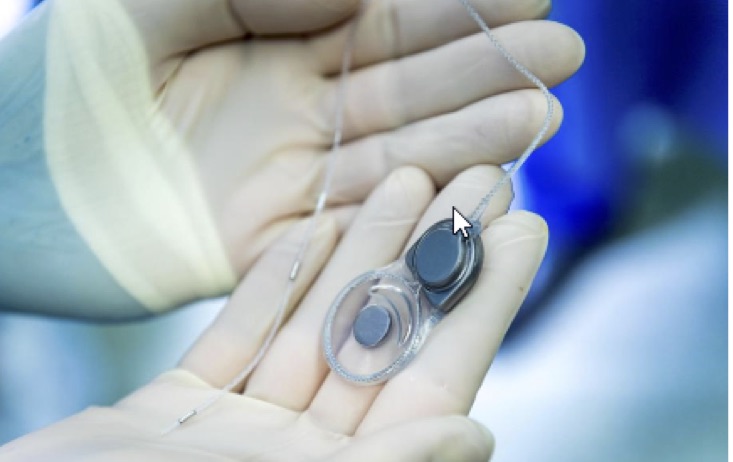
Minder (Epi-Minder, Melbourne)
Subscalp EEG recording is a promising emergent technology with case reports starting to be published and several systems currently in development and clinical trials.
A review of subscalp EEG recording, published in Epilepsia, says the devices have several applications such as seizure monitoring, forecasting, treatment optimisation, pre-surgical work-ups and alarms.
In particular, they meet an unmet need for “ultra-long‐term (ie, >1 month) EEG data collection in a home environment that can reveal temporal fluctuations in patterns of seizures.”
“This may have many advantages for personalized epilepsy management in the context of rare seizures, cycles of epileptic brain activity in a majority of patients, and alternating seizure localization in some individuals with multifocal epilepsies (eg, bitemporal epilepsy),” the review said.
Currently, devices vary widely as in the number of channels (two to 32), recording modalities (EEG +/- 3 axis accelerometer), degree of invasiveness (one incision under local anaesthesia or up to four incisions under local or general anaesthesia), and positioning of batteries (external v internal).
They include the Australian device Minder (Epi‐Minder, Melbourne) which features bilateral electrode coverage. A clinical trial is underway although surgery restrictions due to COVID-19 has led to a pause in recruitment.
The review noted that safety data on the devices is currently to a single study of nine patients using the 24/7 EEG SubQ (UNEEG Medical A/S, Denmark). This study showed the subcutaneous EEG devices were well tolerated for up to three months and with no serious adverse events.
However their future role also throws up challenges such as how to analyse the huge amount of 24/7 data generated in ultra-long-term EEG monitoring. Machine learning and big data analysis are likely warranted.
The review, co-authored by Melbourne neurologist and CEO of Epi-Minder Professor Mark Cook, said doctors and patients were ready to embrace new technology based on their responses to wearable technology, scalp EEG and intracranial EEG.
In a survey of user, carer and doctor preferences, most doctors (85%) and patients (65%) agreed on the usefulness of seizure detection devices, especially during the night. Doctors felt alarms with major motor seizures and seizures associated with falls were particularly important.
Both doctors and patients expected a high seizure detection sensitivity of 90% or more.
“Obviously, acceptance will vary on an individual basis and depend on the tradeoff between perceived benefit and the sum of inconveniences and potential side effects,” the review said.
“It [subscalp EEG] could give novel insights into brain function and is likely to open new avenues for biomarker discovery, personalized treatment, and population analytics, especially when combined with other complementary information such as movement and heart rate,” the review concluded.
“Only when data have been collected over long periods of time will the true value of algorithm development for seizure prediction in patients be apparent.”